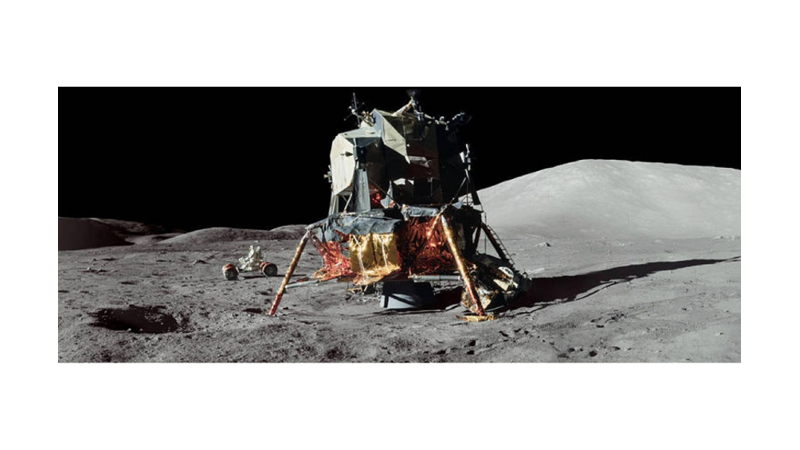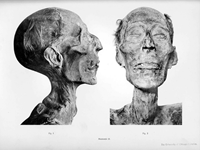The Moon was geologically active between 3.7 and 2.5 billion years ago and experienced earthquakes, volcanic eruptions and outgassing. Thanks to the Moon being an airless body, evidence of this past has been carefully preserved in the form of extinct volcanoes, lava tubes and other features.
Although the Moon has been geologically inactive for billions of years, it still experiences small seismic events due to tidal flexing (due to Earth's gravity) and temperature variations. These latter events occur regularly and are known as "moonquakes".
Thanks to the Apollo missions, scientists have measured this activity using seismometers placed on the surface.
In a recent NASA-funded study, a team of researchers from the California Institute of Technology (Caltech) re-examined the seismic data with a machine learning model.
The study revealed that moonquakes occur with a certain regularity, coinciding with the Sun rising to its highest position in the sky and then slowly setting. In this respect, moonquakes are like a "Moon Alarm Clock" that could be useful for future missions and lunar settlers!
The research, funded by NASA, was led by Francesco Civilini, a graduate of the California Institute of Technology (Caltech) and currently working at NASA Marshall Space Flight Centre. He was accompanied by Renee Weber, Planetary Scientist at the Marshall Space Flight Centre, and Allen Husker, Research Professor of Geophysics in Caltech's Department of Geology and Planetary Sciences.
The paper describing their findings, "Thermal Moonquake Characterisation and Cataloguing Using Frequency-Based Algorithms and Stochastic Gradient Descent," was published on 5 September in the Journal of Geophysical Research - Planets.
Unlike tidal flexing in the lunar interior, moonquakes are caused by temperature changes in the lunar crust (thermal earthquakes). The airless environment on the Moon essentially means that heat from the Sun is not retained and sunlight does not cause the surface to gradually heat up.
As a result, the crust heats up to 120 °C (250 °F) during the peak hours of the day and drops to -133 °C (-208 °F) at night. This causes the crust to expand and contract rapidly, triggering small seismic events. In 1972, astronauts on the Apollo 17 mission placed seismometers on the Moon to measure this activity.
The sensors collected data over an eight-month period (October 1976 to May 1977), which remained largely untouched until recently. For their purposes, Civilini and his team re-analysed this lunar seismic data using a machine learning model.
Their analysis showed that thermal earthquakes occur with a certain regularity every afternoon when the Sun leaves its highest position in the sky and the surface begins to cool rapidly.
However, the model also detected seismic signatures in the morning that appeared different from the evening quakes.
The researchers were able to triangulate the source of the activity and found that the morning tremors came from several hundred metres away from the seismometers, from the Apollo 17 lunar lander itself!
Every morning when sunlight reached the rover, its surface expanded, causing vibrations in the ground that were detected by the seismic array.
"Every lunar morning, when the Sun hits the lander, it starts to explode," Husker said in a Caltech press release. "Every five to six minutes, another one for five to seven Earth hours. These were incredibly regular and repetitive."
This data could have important implications for future missions to the Moon, including NASA's Artemis Programme. While thermal earthquakes are too small to be felt by anyone on the lunar surface, these findings provide vital data that could inform the design of future landers and equipment.
It could also inform the structure of future bases, such as the Artemis Base Camp, the International Lunar Research Station (ILRS) and the Lunar Village, where ESA recommends using composite materials instead of alloys to avoid triggering localised earthquakes.
In addition, seismic activity is a good way to investigate the internal structure of celestial bodies and to find materials (such as water ice) underground. Husker said:
"Hopefully we can map subsurface cratering and look for sediments. "There are also certain areas in the craters at the Moon's South Pole that never see any sunlight; they are constantly in shadow. If we can place a few seismometers there, we can look for water ice that may be trapped under the surface; seismic waves travel more slowly in water."
Even though there is no plate tectonics or volcanic activity on the Moon, researchers still have many questions about its internal structure.
"It is important that we learn as much as possible from the data we have so that we can design experiments and missions to answer the right questions," Husker added.
"The Moon is the only planet other than Earth that has more than one seismometer on it at the same time. This gives us the only opportunity to study another body in depth."
Source: https://www.sciencealert.com/


 Nielawore
Nielawore









Yorum yazmak için lütfen giriş yapınız